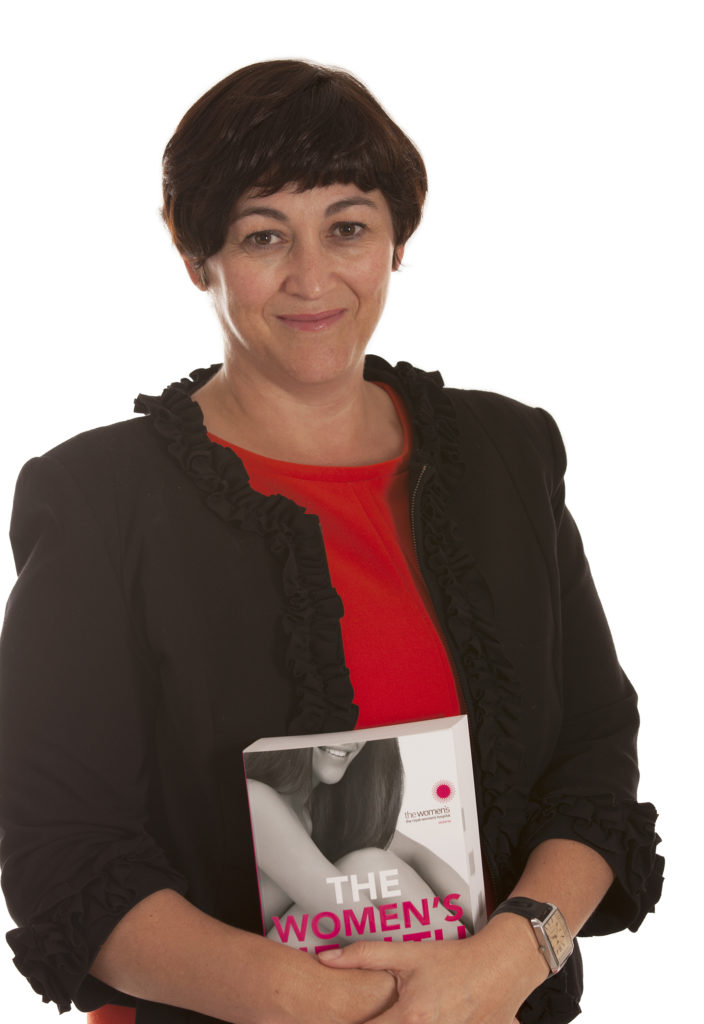One reason is that patients tell us that they need plain-language health information from a credible, authoritative source to make informed choices about treatment, health and wellbeing. The Women’s Health Book provides women with empowerment to make appropriate health choices.
The book is also a brand building tool that increases the awareness and relevance of the Women’s brand across Australia.
The Women’s communication strategy aims to protect and further build the reputation of the hospital. We employ a range of traditional corporate communications tools, with a heavy reliance on traditional (mainstream) media relations, to do this.
Our communications strategy also aims to position the hospital as a national thought leader in women’s health issues. The approach we use to communicate message is content marketing, which provides stakeholders with authoritative and credible information.
As an organization, the Women’s believes it has a responsibility to share its knowledge and expertise with the general public and community health professionals. This commitment to knowledge transfer is enshrined in the hospital’s strategic objectives and culture, which is why 50 plus senior clinicians donated their time to write The Women’s Health Book.
We needed great national marketing and publicity for our book – publisher Random House Australia delivered in buckets. The publicity campaign for the book has provided national television and radio exposure for our Chief Executive and our health experts have now spent hours (literally) on radio discussing women’s health. Based solely on the numbers around the media coverage and the distribution of store catalogues promoting the book, the Women’s brand has reached every household in Australia.
In the lead up to the publication of The Women’s Health Book, we also launched a new website. The site was built for three key audiences – lay seekers of health information, health professionals seeking specialist health information, and patients and visitors. The website is the central repository of our news and information – it’s where we direct social media followers and all those who engage with our brand through mainstream media.
Some may question why, when based in Victoria, would the Women’s choose to pursue a national profile?
The answer is that the Women’s has a commitment to changing the social determinants of health. Societal factors have a huge impact on women’s health – typically, a woman is the primary carer of children (and sometimes also parents), has less financial security (lower wages and superannuation) and less “control over destiny” (a known factor for increased illness and death in both men and women). As a society, we need to change our approach and take sex and gender differences into account in medical research and healthcare.
The reason we’re trying to increase brand awareness and relevance across the nation is that we’re trying to engage all Australians to make change. The third goal in our communications strategy is to engage, educate and inspire women, and those who love them, to reduce social and health inequities.
We’re using brand journalism – publishing stories, images and videos on the hospital’s website and social media channels. This is to highlight facts and figures on women’s health issues and health inequities, to provide health information, news and commentary on research studies (not necessarily our own), and to engage with patient, staff, donor and volunteer stories and with fundraising appeals.
An integrated marketing and communications approach is leveraging the advertising around the book, social media engagement and proactive media relations to drive consumers to our online platforms. This in turn, creates information exchange and drives awareness of the Women’s brand – our audience is sharing the information and stories with their social networks who then engage with our online platforms. It’s a slow-moving but virtuous circle.
I am incredibly privileged to work for an inspiring organisation that considers communications to be a strategic business function, a critical component of fulfilling its responsibilities to its patients, and also the key to delivering on its mission. The hospital invested significant amount of human and financial resources in order to create a new website, to recruit staff needed for rich content creation, and to produce The Women’s Health Book. This was because our communications strategy was designed to achieve the hospital’s strategic objectives, which are the foundation of the organisation.
You don’t need a large investment to take a similar approach. Not all not-for-profits (NFP) will have the same opportunities for content marketing as the Women’s. But most are able to use brand journalism to generate awareness of their brand and mission.
There are countless amazing stories of clients, staff, donors and volunteers thriving in our sector – these can be used to engage directly and meaningfully with our communities. With online platforms, particularly social media channels, NFPs can distribute stories for little to no cost – all that’s needed (at a minimum) is a smartphone and a creative copywriter. Also required is a communications strategy that creates, leverages and cross-promotes media opportunities, all internal news, every partnership and the most importantly the passion of your existing stakeholder groups. This will create your own virtuous circle.











